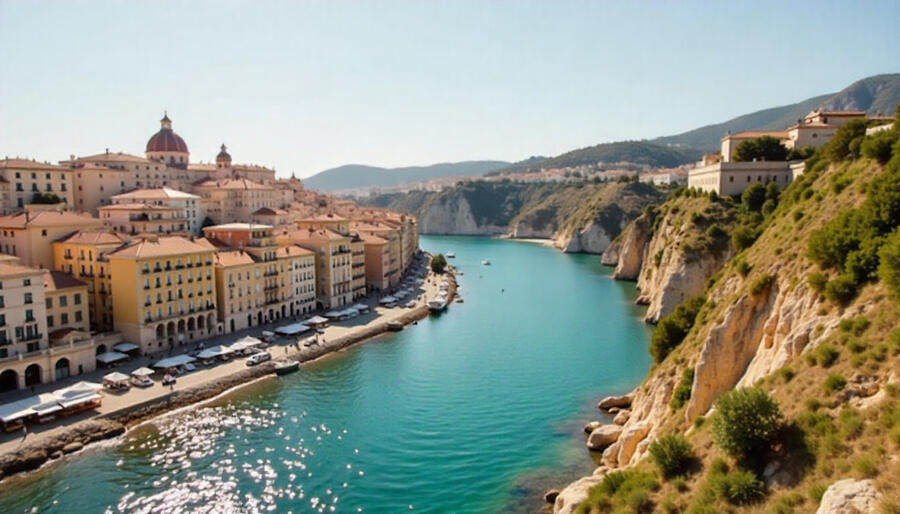Published on
November 14, 2025

Spain is witnessing an exciting shift in its tourism landscape, as the premium tourism segment continues to rise. While premium visitors make up just a small fraction of total international arrivals—less than 2%—they contribute far more economically. Data from Turespaña reveals that these high-spending travelers spend over four times the daily average of regular tourists, cementing their importance in Spain’s tourism strategy. The majority of these premium visitors come from countries like the United States, Japan, Australia, and, in recent years, Mexico and Colombia. They favor destinations such as Madrid and Catalunya, where business, culture, and gastronomy take center stage.
The Profile of Premium Tourists
Turespaña defines premium tourists as those who spend three times or more than the international daily average per day. These individuals are typically high-income professionals, aged between 25 and 65, often in executive or leadership roles. Unlike the mass tourism market, which is largely focused on beach resorts, premium travelers look for more refined experiences—business trips, cultural activities, fine dining, and luxurious stays.
Unlike typical seasonal tourists, premium travelers prefer visiting during Spain’s off-peak months, arriving primarily between March and June and again from September to December. Their trips tend to be brief—usually lasting less than half the time of the average tourist’s stay—but their high spending more than compensates for the reduced length of stay.
Spain’s Urban Appeal and Growth
Traditionally known for its coastal resorts, Spain is now also emerging as a prime destination for urban tourism. Cities such as Madrid, Barcelona, and other cultural hubs have become more appealing to affluent travelers. These cities, rich in history, culture, and fine dining, have become the focal point for high-value tourists, with Madrid and Catalunya leading the charge.
Turespaña highlights that urban tourism has gained traction among premium visitors, and this trend is contributing to the growth of Spain’s tourism sector outside the peak summer months. The country’s cultural, business, and gastronomy offerings have proven to be key drivers of this shift, as more affluent tourists opt for city breaks that offer immersive experiences beyond just the sun and sea.
Shifting Travel Preferences: Post-Pandemic Trends
Post-pandemic, the preferences of premium tourists have evolved significantly. While cultural experiences remain a top priority, there has been a marked increase in interest in gastronomy and wine tourism, along with a growing demand for wellness and nature experiences. Wellness tourism, in particular, has surged as health-conscious travelers seek rejuvenation and relaxation through spa treatments, wellness retreats, and nature-based activities.
Spain has capitalized on these emerging trends, expanding its offerings to cater to high-end tourists seeking personalized wellness experiences. The country’s luxury resorts and wellness centers have become increasingly popular among premium travelers, further diversifying the appeal of Spain’s tourism sector.
Premium Accommodation and Curated Travel Packages
When it comes to accommodation, premium tourists overwhelmingly prefer high-end hotels. In fact, 92% of premium visitors stay in hotels, surpassing the pre-pandemic figure of 88%. These travelers expect nothing less than top-tier services and exclusive experiences, which luxury hotels in Spain are well-equipped to provide.
Curated travel packages are also more common among this group, with 35% opting for packages compared to just 18% of the broader tourist population. This reflects the growing demand for tailored experiences that combine convenience with luxury, such as custom itineraries that blend cultural tours, fine dining, and high-end business activities.
Loyalty and Repeat Visits: A Different Pattern
While premium tourists may not visit Spain as often as other travelers, they still display considerable loyalty to the country. Approximately 63% of premium tourists have visited Spain before, although only 28% have made 11 or more visits—far below the 47% return rate seen among general visitors. This suggests that while premium tourists may not return as frequently, they are highly engaged with the destination and may be more likely to return for specific cultural, gastronomic, or business offerings that evolve with time.
A Diversified Premium Market: Retail and Cultural Tourism
In addition to cultural and gastronomic tourism, Spain also attracts “shopper” tourists, who focus on luxury retail experiences. In 2024, shopping tourism exceeded pre-pandemic levels by 1.8%, with retail spending rising by 31% since 2019. This indicates that Spain is becoming an increasingly popular destination for affluent shoppers, particularly from the United States, Morocco, Mexico, and the United Kingdom.
China and Colombia have also emerged as growing sources of high-spending retail tourists, further diversifying Spain’s premium tourism market. These tourists, while shopping-centric, are also seeking unique cultural experiences, reinforcing Spain’s broader shift toward a more diversified and experience-driven tourism product.
Conclusion: A Bright Future for Premium Tourism in Spain
As Spain continues to recover and evolve from the challenges posed by the pandemic, premium tourism is proving to be a key pillar of the country’s economic recovery. The combination of cultural richness, vibrant urban destinations, and high-end experiences is solidifying Spain’s position as a top choice for affluent travelers.
With its increasing appeal for both business and leisure, coupled with an expanding wellness and gastronomy sector, Spain is poised for continued growth in premium tourism. As more high-value tourists seek personalized, luxurious experiences, Spain’s tourism sector will continue to adapt, ensuring the country remains a prime destination for those seeking both relaxation and business in one vibrant location.

